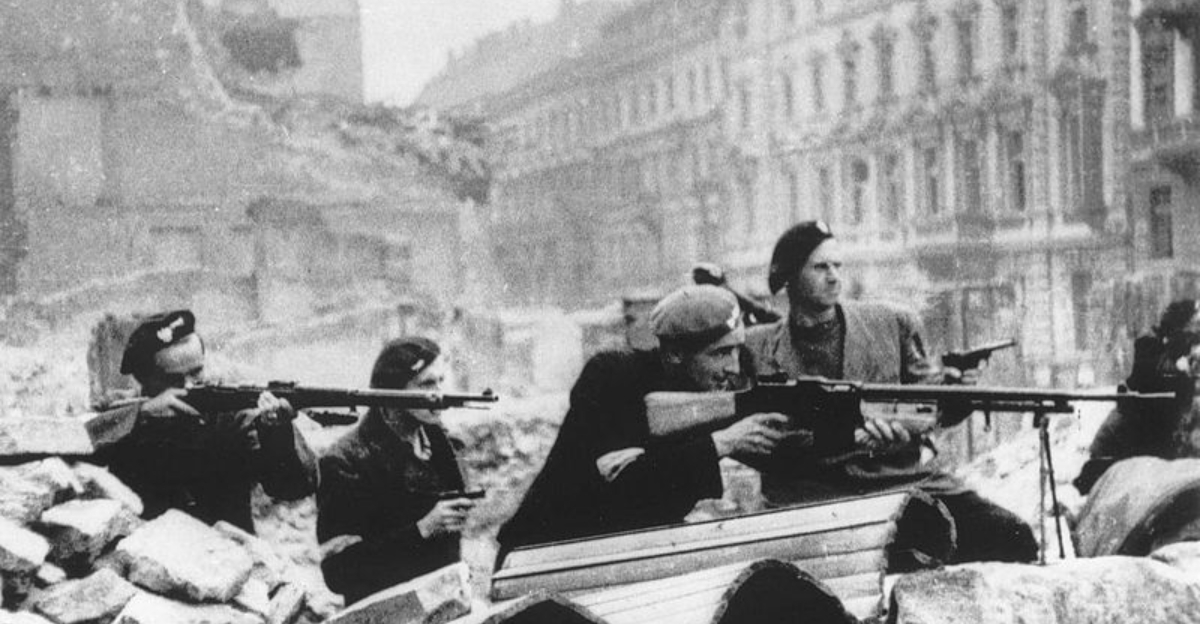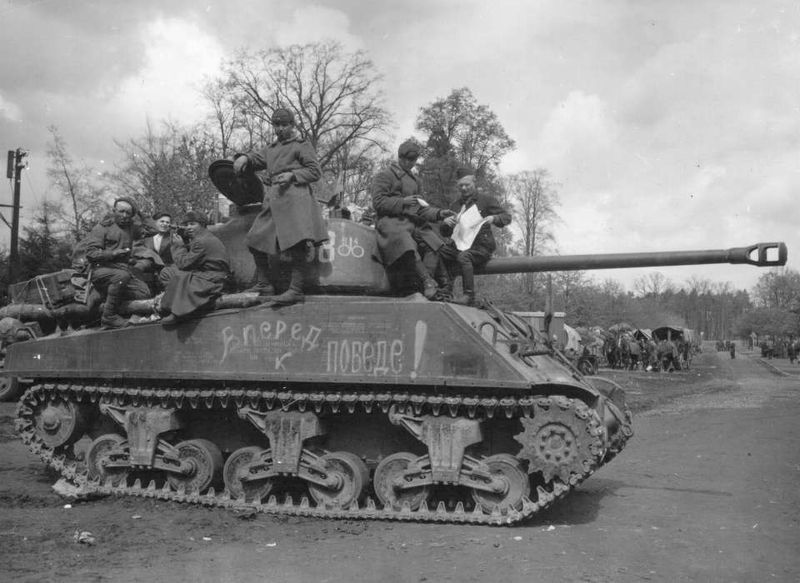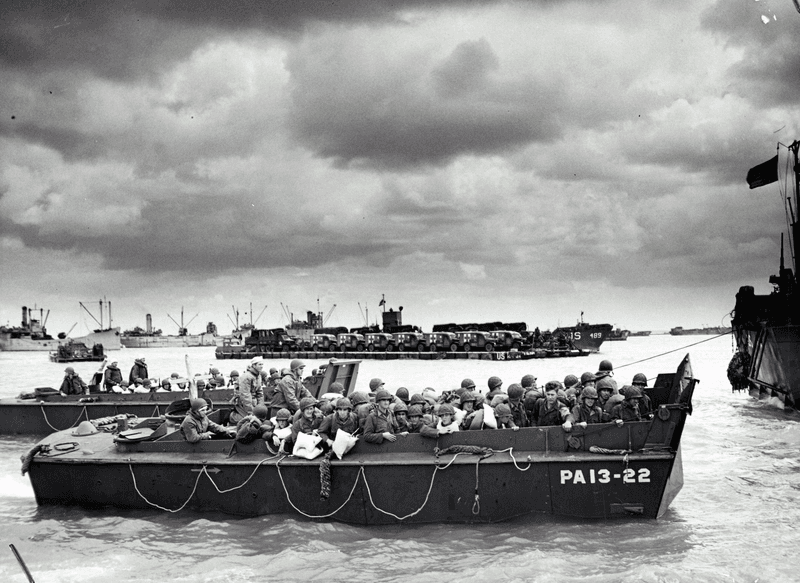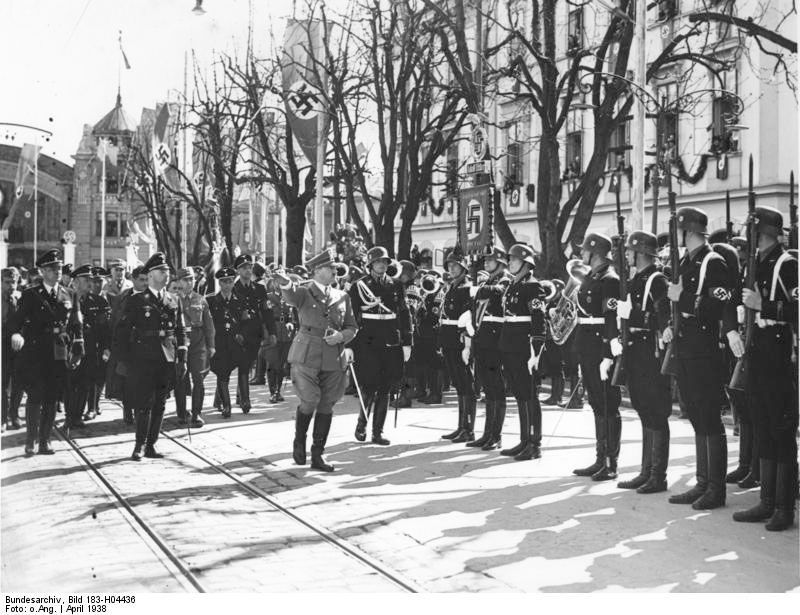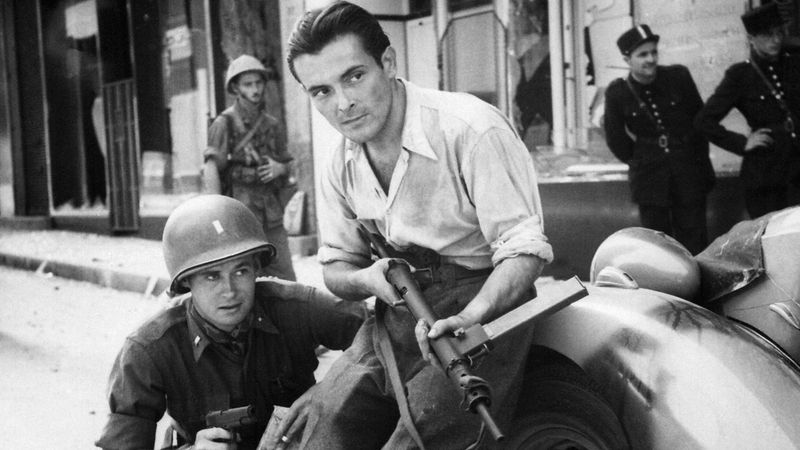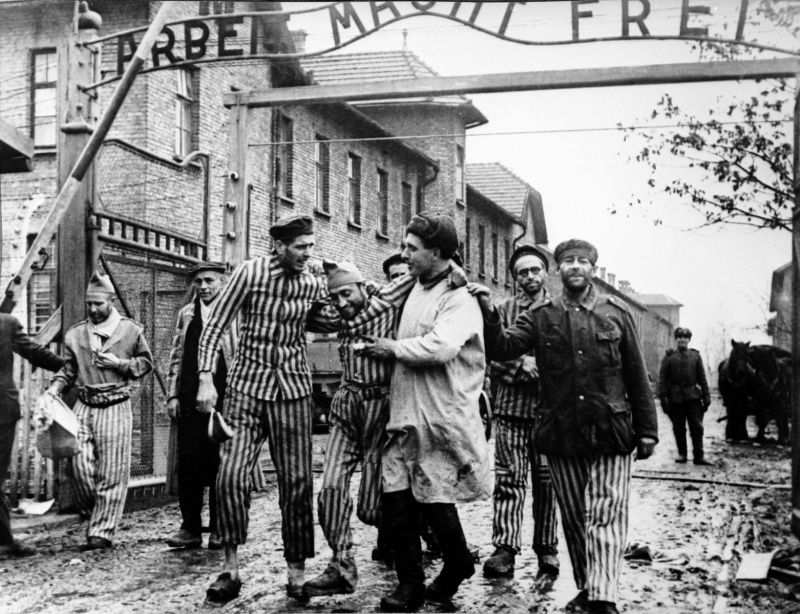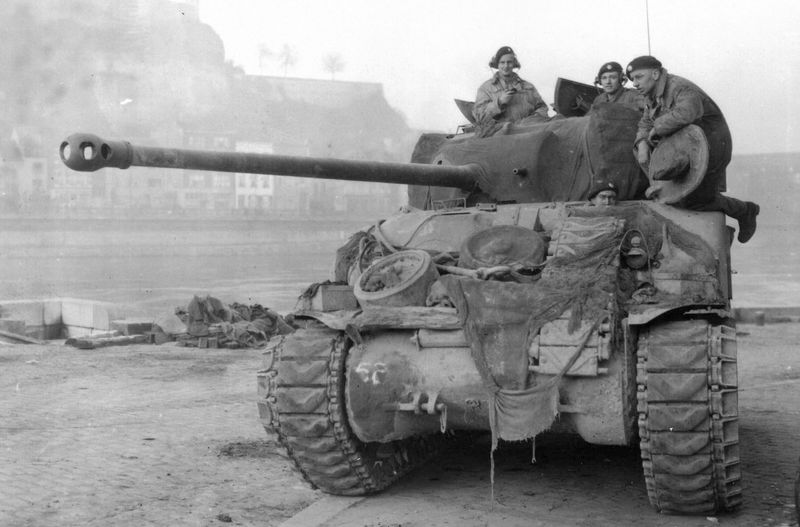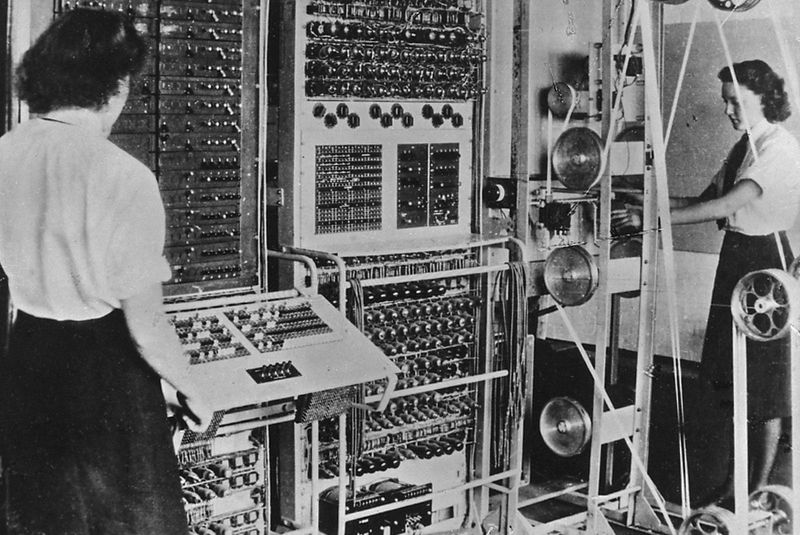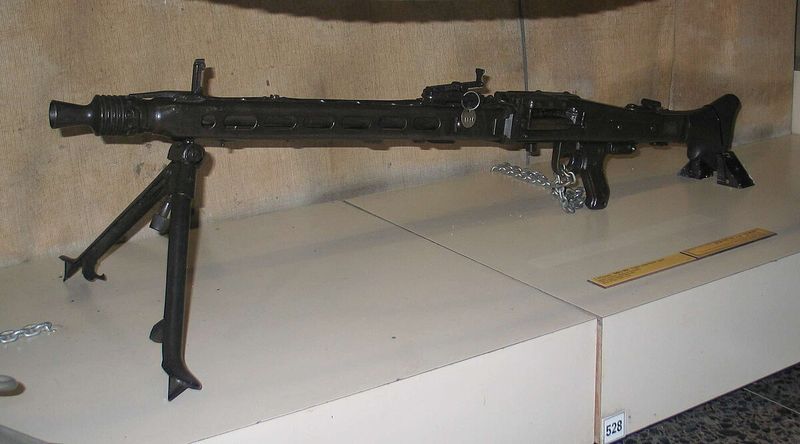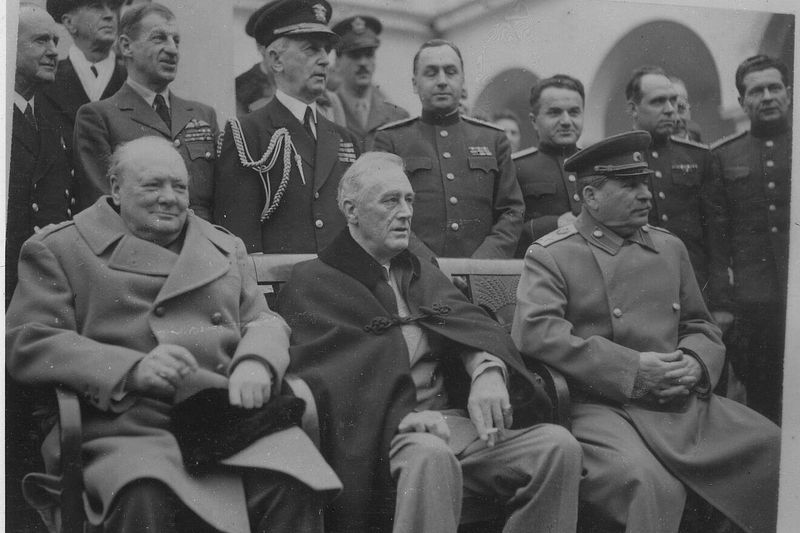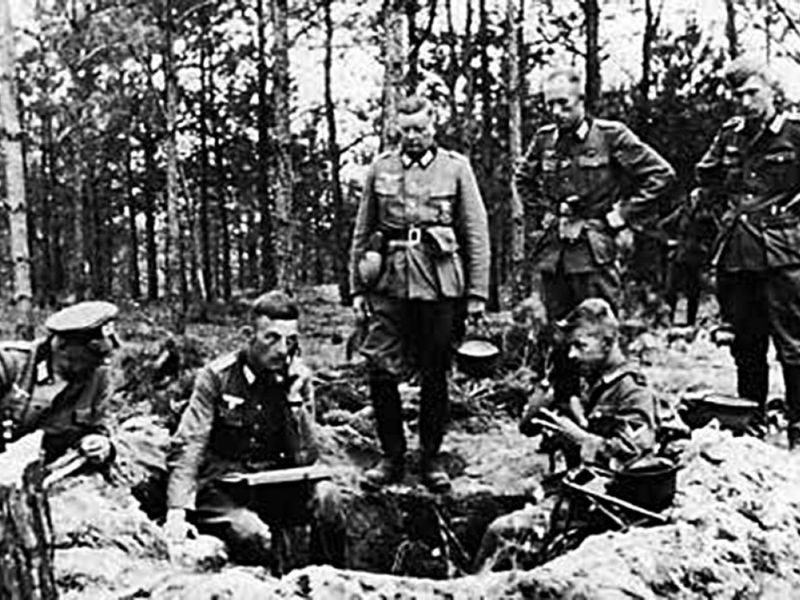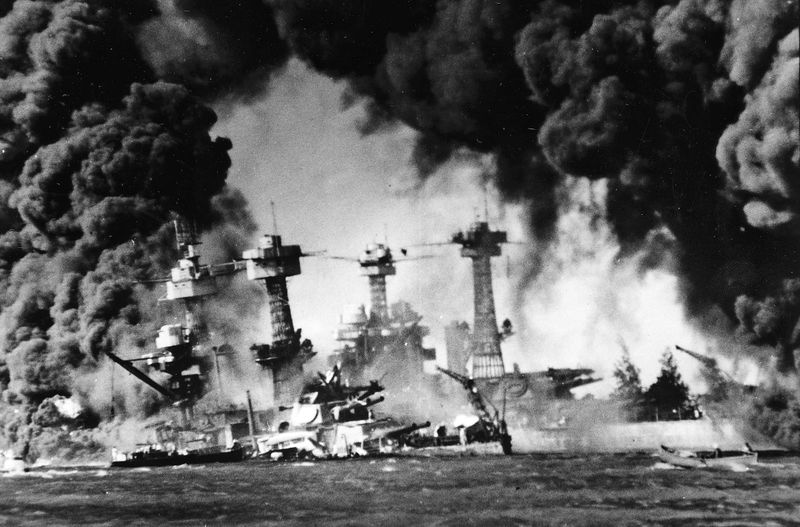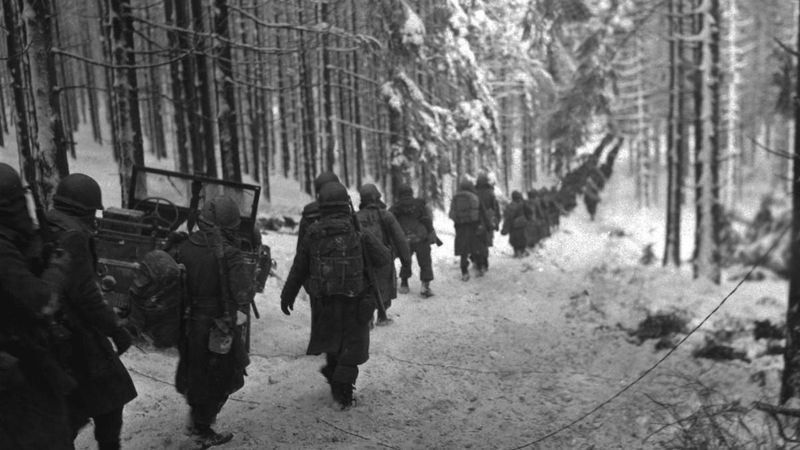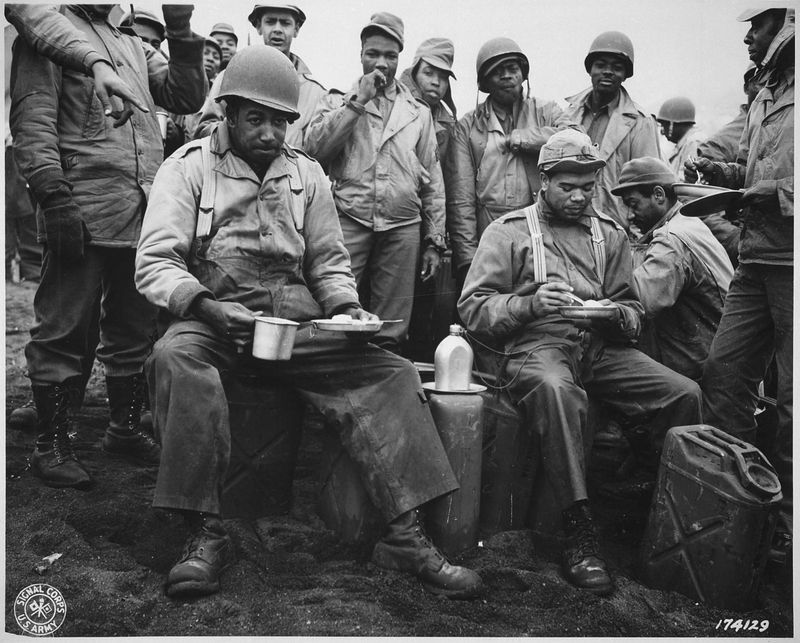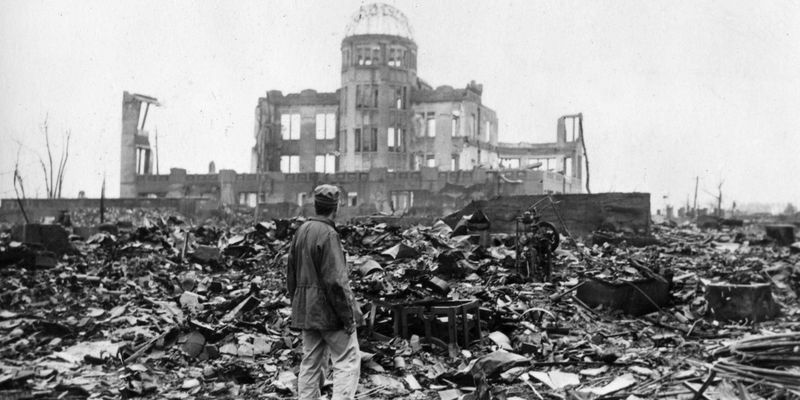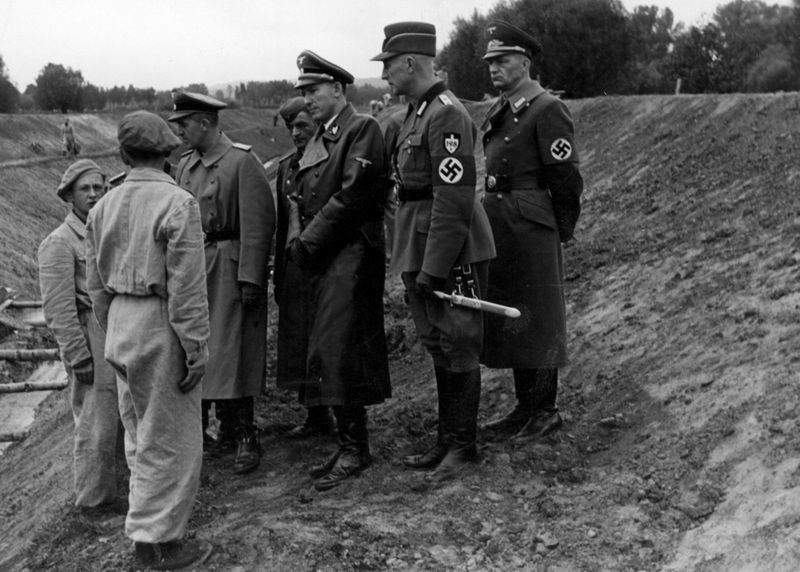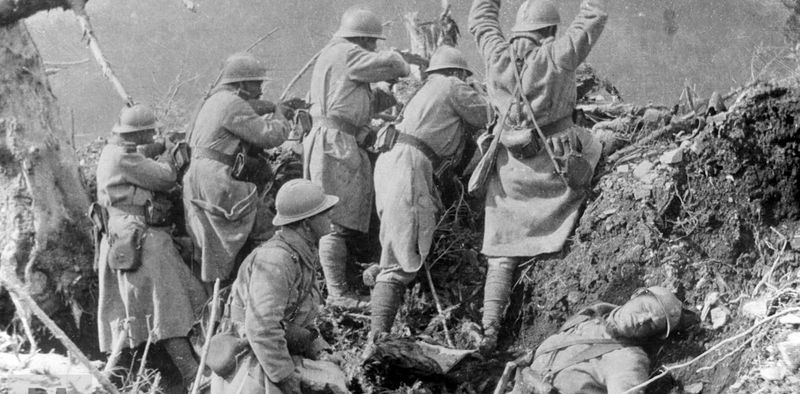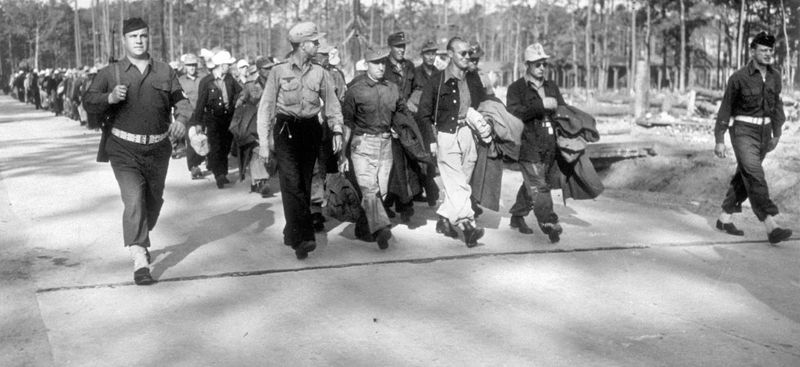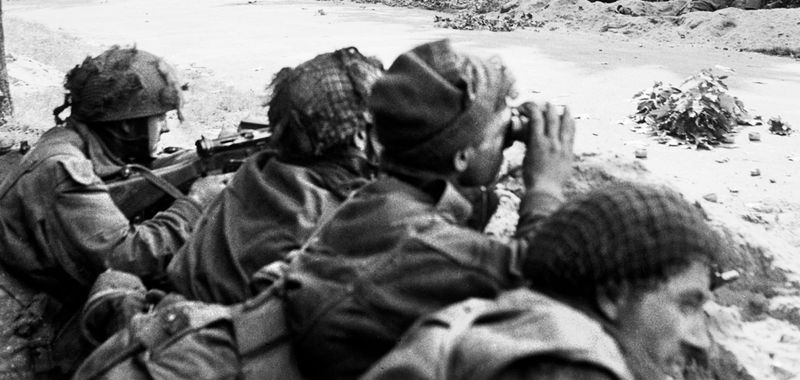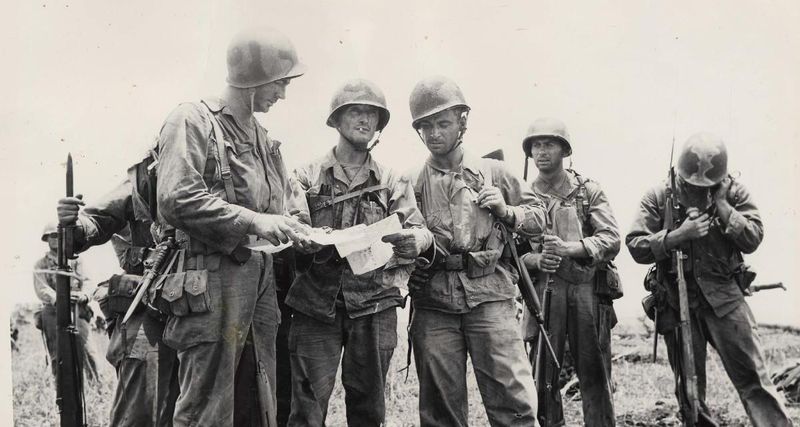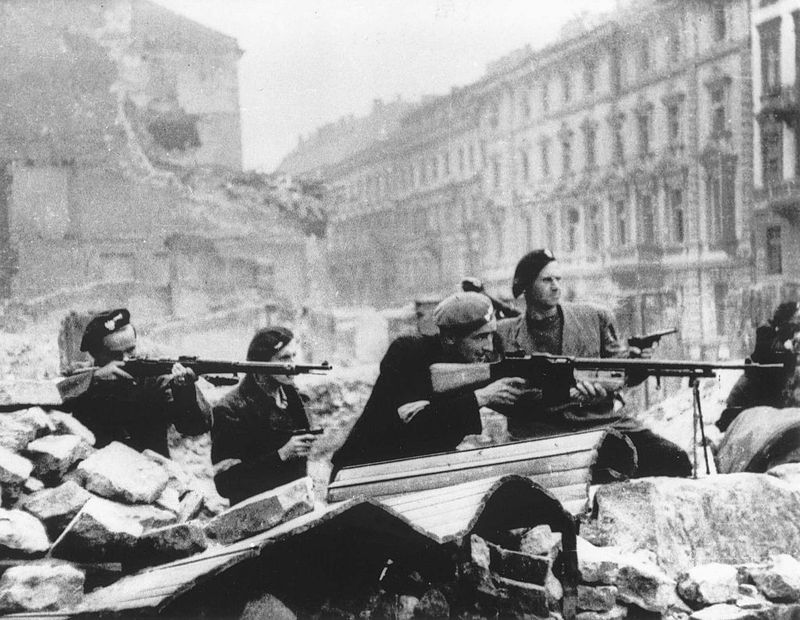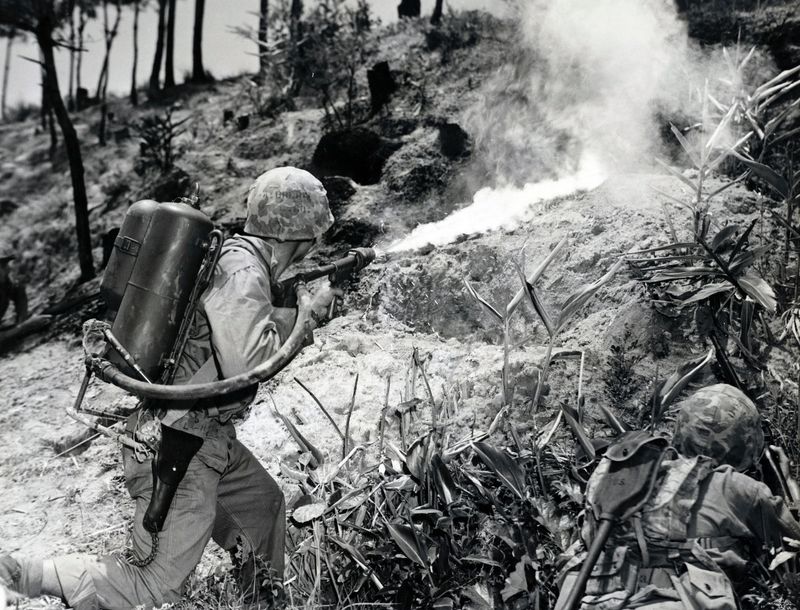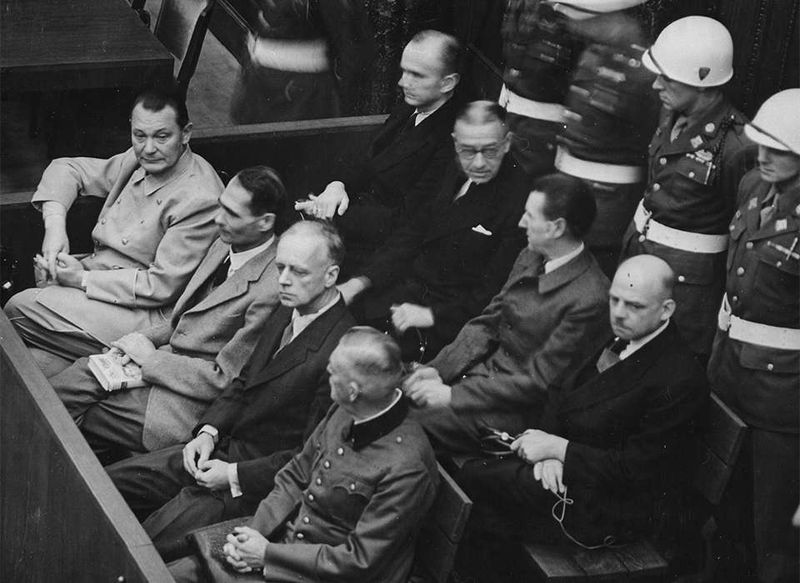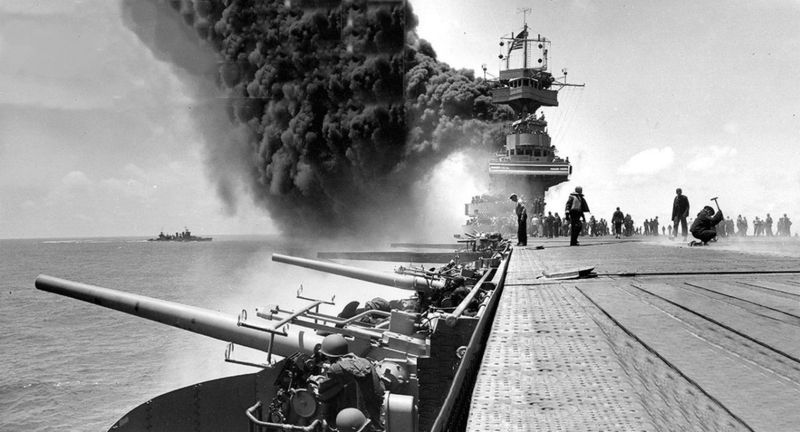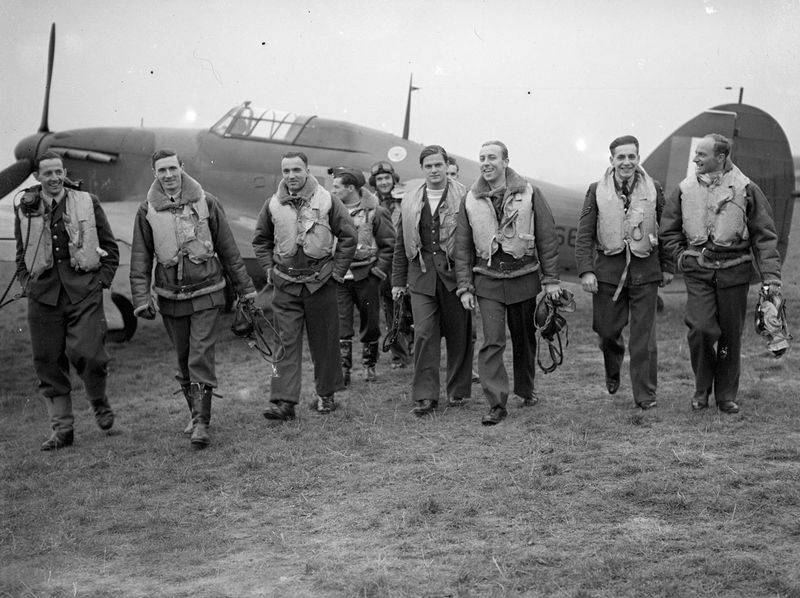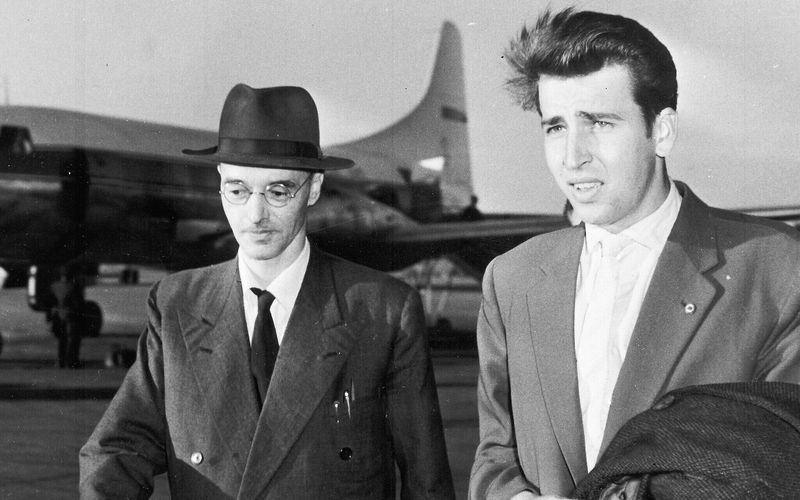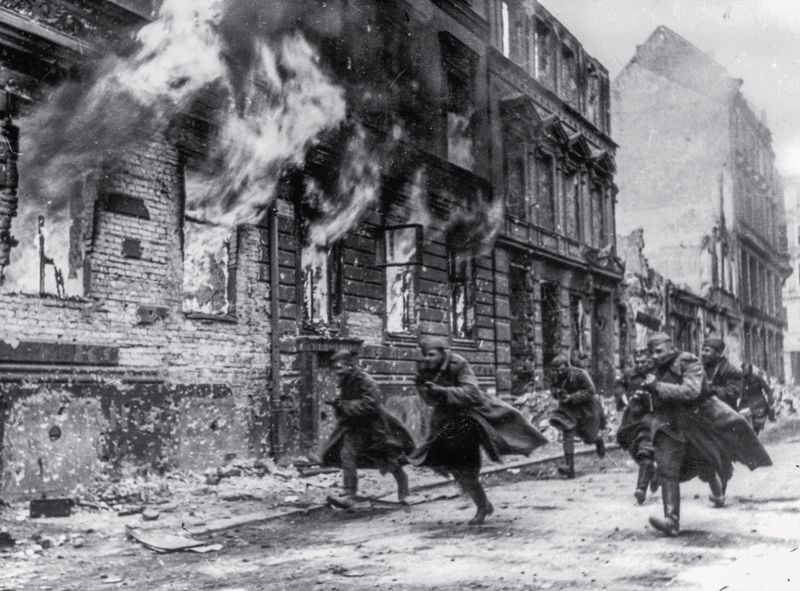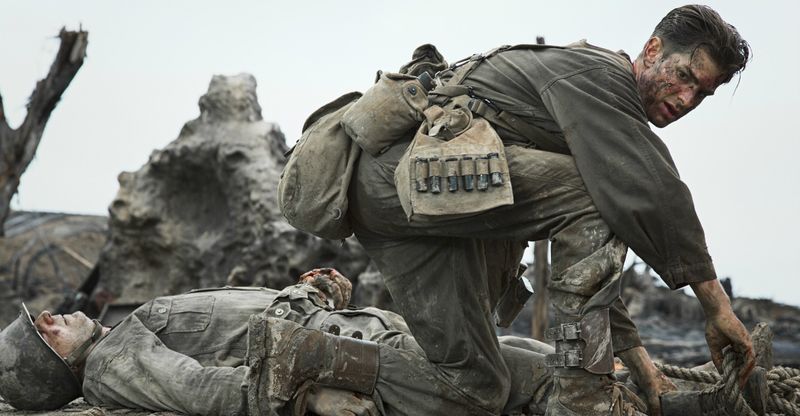Explore the fascinating contrast between Hollywood’s portrayal of World War II and the reality of the events. These 30 myths reveal the differences between silver screen stories and historical truths, uncovering misconceptions perpetuated by popular films.
1. The Americans Won the War Almost Single-Handedly
Hollywood often depicts American forces as the primary victors of World War II, as seen in films like Saving Private Ryan and Band of Brothers. This portrayal overshadows the significant contributions of other nations.
The Soviet Union played a pivotal role, bearing the brunt of German aggression with 80% of their casualties occurring on the Eastern Front. The UK and Commonwealth forces, along with various resistance movements, also had substantial impact.
This narrative diminishes the diverse and collective effort required to defeat the Axis powers, highlighting a skewed version of history.
2. D-Day Was an All-American Show
Hollywood’s focus on Omaha Beach, mainly occupied by U.S. forces, creates the impression that D-Day was primarily an American operation. However, it was an extensive Allied effort.
British, Canadian, and Free French troops also stormed the beaches at Gold, Juno, and Sword. They faced intense resistance, contributing significantly to the success of the landings.
This broader perspective reveals the multinational cooperation essential during this pivotal moment, challenging the simplified version often presented in movies.
3. Germans Were All Fanatical Nazis
In Hollywood, German soldiers are frequently portrayed as ruthless Nazis, epitomized by fanatical SS officers. This stereotype ignores the complexities within the German ranks.
Many soldiers were conscripts, fighting under duress, with a significant number lacking support for Nazi ideology. Thousands even deserted or resisted, risking severe penalties.
This oversimplification erases the nuanced reality of individuals caught in the machinery of war, combating both external and internal struggles.
4. The French Resistance Was Everywhere
Movies like Casablanca and Inglourious Basterds suggest that France was teeming with resilient rebels. In reality, only a small fraction actively resisted.
Approximately 2% of the French population participated in resistance activities, with most citizens striving merely to endure the occupation.
This myth exaggerates the scope and visibility of the resistance, overshadowing the challenges faced by those involved and the broader populace’s hardship.
5. Americans Liberated Concentration Camps Alone
Films such as Schindler’s List and Band of Brothers often showcase American troops as the sole liberators of concentration camps. This viewpoint is limited.
The Soviet forces liberated Auschwitz in January 1945, while British troops freed Bergen-Belsen. The liberation was an Allied effort, with various nations contributing.
This narrative diminishes the multifaceted multinational contributions to one of the war’s most humanitarian acts, depicting a more isolated American role than reality warrants.
6. Tanks Were Death Traps That Exploded Instantly
In films like Fury, tanks are shown as vulnerable to instantaneous destruction, exploding dramatically with a single hit. This portrayal is misleading.
Tank crews often survived direct hits, as tanks were designed with protective armor. Most casualties occurred when crews abandoned their tanks under fire, not from initial explosions.
This exaggeration creates a false sense of tanks as mere death traps, ignoring their strategic value and the bravery of their crews.
7. The Japanese Were All Kamikaze Fanatics
Movies like Pearl Harbor and Letters from Iwo Jima often depict Japanese soldiers as zealously committed to kamikaze missions, sacrificing themselves without hesitation. This is an oversimplification.
While kamikaze attacks did occur, especially as the war waned, they were a desperate measure. Many Japanese soldiers opted to surrender when possible, reflecting a range of motivations.
This myth paints a homogeneous picture of Japanese soldiers, overshadowing the complexities of their wartime experiences and choices.
8. The Enigma Code Was Cracked by the Americans
The Imitation Game highlights Alan Turing’s role in breaking the Enigma code, but often U.S. films underplay British contributions. The British Bletchley Park team was instrumental.
American involvement came later, supporting and building upon initial breakthroughs. This collaborative effort was crucial in deciphering encrypted German communications.
The myth of exclusive American success ignores the foundational and essential work of their British counterparts, underscoring a skewed recognition of achievements.
9. Machine Guns Fired Endlessly Without Reloading
In Hollywood, machine guns like the infamous MG42 fire relentlessly, mowing down enemies without pause. This depiction is far from reality.
Machine guns rapidly overheated and required frequent barrel changes and reloading. Operational efficiency depended on careful management and teamwork.
This myth simplifies the logistical challenges faced by soldiers, diminishing the complexity of maintaining and operating these powerful weapons under duress.
10. The Allies Were Always the ‘Good Guys’
Hollywood often portrays the Allies as unequivocal heroes, fighting against unambiguous evil. While they opposed tyranny, not all actions were noble.
The Allies committed their own atrocities, such as Soviet mass rapes in Germany, U.S. internment camps, and the British bombing of Dresden.
Recognizing these darker aspects adds depth to our understanding of wartime actions, highlighting the moral complexities often glossed over in films.
11. The Nazis Were Superhumanly Efficient
Films like Raiders of the Lost Ark depict Nazis as unstoppable machines of war, executing plans with precision. This image is misleading.
Nazi logistics were often chaotic, leading to critical failures. For instance, ill-equipped troops suffered in the harsh Russian winters due to supply shortages and mismanagement.
Understanding these inefficiencies provides a more accurate picture of the Nazi war machine, challenging the myth of their unerring competence.
12. Pearl Harbor Was a Complete Surprise
The movie Pearl Harbor portrays the attack as an unforeseen disaster, catching the U.S. completely off guard. In reality, the surprise was not absolute.
U.S. intelligence had intercepted communications suggesting an imminent Japanese attack, but actionable responses were not executed in time.
This narrative of total surprise overlooks intelligence failures and the complexities of preemptive actions that could have altered history.
13. The Battle of the Bulge Was Fought in Deep Snow
In films like Battle of the Bulge, constant blizzards and deep snow dominate the battlefield. However, these conditions varied.
Much of the fighting occurred in cold rain and mud, with snowstorms being part of the story, but not the whole picture.
This oversimplification creates a monolithic image of the battle’s environment, ignoring the varied and harsh conditions soldiers faced.
14. All German Soldiers Had Perfect Accents
Hollywood often casts actors with heavy German accents to portray German soldiers, adding a layer of stereotype. Yet, many of these actors are not German.
For example, the cast of Hogan’s Heroes consisted entirely of non-Germans, despite their roles. The real soldiers had diverse backgrounds and dialects.
This myth perpetuates a narrow view of cultural representation, ignoring the linguistic diversity within the German military ranks.
15. The U.S. Army Was Fully Integrated
Movies rarely address the issue of segregation within the U.S. military during WWII, creating an impression of racial harmony.
In reality, the U.S. military was racially segregated, with African American soldiers facing discrimination, even in combat situations. Units were often separate, impacting morale and unity.
This myth glosses over the racial challenges and the contributions of diverse troops, offering a distorted view of military integration.
16. The Atomic Bombs Ended the War Instantly
Movies often suggest that Japan surrendered immediately following the atomic bombings, as seen in Oppenheimer. However, other dynamics were at play.
The Soviet invasion of Manchuria on August 9, 1945, dealt a significant blow to Japanese forces, contributing heavily to the decision to surrender.
This narrative overlooks the complex geopolitical factors influencing Japan’s surrender, presenting a more nuanced end to the conflict.
17. All SS Officers Were Evil Monsters
Inglourious Basterds and Schindler’s List depict SS officers as uniformly sadistic and monstrous, creating a stark image. However, the reality was more complicated.
While figures like Oskar Dirlewanger were undeniably cruel, others were mere bureaucrats, embedded within the Nazi system without overt brutality.
This simplification masks the varied nature of SS roles and motivations, reducing complex human behavior to a single narrative.
18. The French Army Was Useless
Movies often depict the French military as ineffectual, particularly during the early stages of WWII, as mocked in Darkest Hour. This view is overly harsh.
French forces fought valiantly, with around 100,000 soldiers dying in just six weeks during 1940. Their resistance laid groundwork for future Allied successes.
This narrative diminishes their sacrifices and perseverance, overshadowing the bravery displayed in dire circumstances.
19. Americans Never Executed POWs
Hollywood tends to portray U.S. troops as unfailingly adhering to the Geneva Convention, exemplifying moral superiority. In reality, this was not always true.
Instances occurred where American soldiers executed surrendering Germans, especially after witnessing the horrors of concentration camps.
This aspect challenges the black-and-white portrayal of ethical conduct, reflecting the complexities and emotional tolls of warfare.
20. The British Were Always Noble
Films like Dunkirk often depict British forces as purely heroic, glossing over any moral ambiguities. Although they performed valorous acts, not all decisions were noble.
British forces left behind Indian and African troops during retreats, highlighting less glamorous aspects of their wartime conduct.
This narrative challenges the idealized image, acknowledging the difficult choices and consequences faced during war.
21. The Pacific War Was Only About the U.S. vs. Japan
Hollywood primarily focuses on the U.S. and Japan in the Pacific, as seen in series like The Pacific (HBO), simplifying a complex theater of war.
Allied forces, including Australians, Chinese, and Filipinos, fought significant battles against Japan, each contributing uniquely to the war effort.
Ignoring these contributions reduces the rich tapestry of wartime alliances, overshadowing the collaborative fight against Japanese aggression.
22. The Warsaw Uprising Was a Hollywood-Style Last Stand
The Warsaw Uprising is often omitted or romanticized in Hollywood, depicted as a singular heroic stand. The reality was grimmer.
For 63 days, Polish resistance fought valiantly, with the Soviet Union controversially delaying assistance, resulting in devastating consequences.
This myth simplifies a complex and tragic episode, failing to convey the depth of sacrifice and tactical challenges faced by the resistance.
23. All Spies Were Glamorous
Films like Casablanca and Allied paint espionage with a glamorous brush, filled with intrigue and romance. Yet, real espionage was starkly different.
Most spies were ordinary people, operating in secrecy and constant danger. Many were captured and executed, far from the romantic images seen on screen.
This narrative glosses over the harsh realities of espionage, focusing instead on a dramatized version that neglects the lived experiences of real spies.
24. The U.S. Didn’t Use Flamethrowers Excessively
Hollywood often downplays the use of flamethrowers by U.S. forces, presenting a sanitized view of warfare. However, they were extensively used.
In the Pacific, flamethrowers were a common tool for clearing Japanese bunkers and caves, leading to brutal outcomes for those inside.
This myth perpetuates a less violent image of American tactics, ignoring the harsh realities and ethical implications of their widespread use.
25. The Nazis Were the Only Ones Experimenting on Humans
Films like The Boys from Brazil highlight Nazi human experiments, often ignoring similar atrocities by others. However, they were not alone.
Japan’s Unit 731 conducted horrific experiments in China, while the U.S. carried out unethical medical studies, such as the Tuskegee syphilis experiment.
This myth simplifies the narrative of wartime atrocities, failing to acknowledge the wider scope of human rights violations during the era.
26. The Battle of Midway Was Won by Luck
Films like Midway (2019) emphasize miraculous luck in the U.S. victory during the Battle of Midway, overshadowing strategic planning.
U.S. codebreakers had deciphered Japanese intentions, allowing for preemptive and informed military maneuvers, leading to a decisive triumph.
This portrayal underestimates the critical role of intelligence and strategic acumen, presenting a skewed version of the pivotal battle.
27. The RAF Was All British
Movies like Battle of Britain often portray the RAF as an exclusively British force, omitting its international composition.
In reality, about 20% of RAF pilots were from countries such as Poland, the Czech Republic, and Canada, contributing to the collective effort.
This myth reduces the global cooperation and camaraderie that defined the RAF’s strength, focusing narrowly on British contributions.
28. The U.S. Didn’t Work with Soviet Spies
Cold War films often overlook the WWII-era collaboration between the U.S. and Soviet intelligence, portraying them as perpetual adversaries.
The Manhattan Project, crucial to developing nuclear technology, was infiltrated by Soviet spies, revealing complex wartime alliances.
This narrative simplifies the espionage landscape, ignoring the nuanced relationships that characterized wartime intelligence operations.
29. The War Ended in 1945
Hollywood films often depict a clean end to WWII in 1945, with a swift transition to peace. However, the reality was more tumultuous.
Postwar Europe and Asia endured turmoil, with millions perishing in famines, reprisals, and civil wars in places like Greece and China.
This myth simplifies the aftermath of the war, neglecting the lingering conflicts and humanitarian crises that persisted beyond official victory.
30. War Movies Show the True Horror of Combat
Even the grittiest war films, like Saving Private Ryan, cannot fully capture the true horror of combat. They often sanitize or dramatize events.
Real war involves indescribable smells, starvation, and psychological trauma, elements difficult to convey on screen. The human experience is far more complex.
This myth underscores the limitations of cinema in portraying the brutal realities of war, offering a reminder of the vast differences between media and real life.
